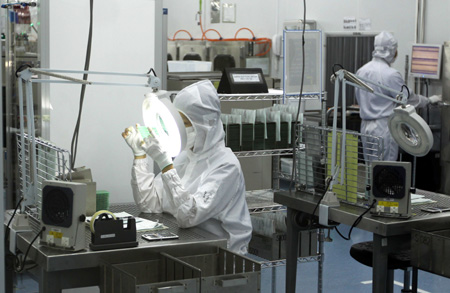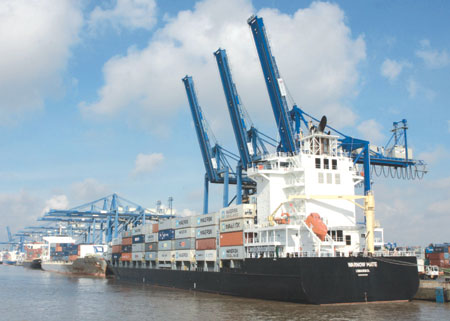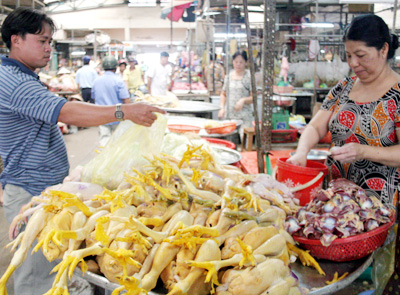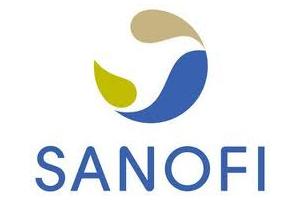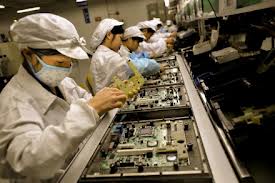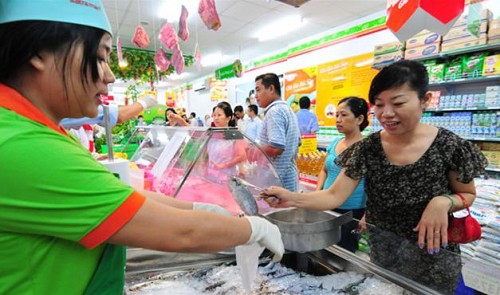WTO membership fails to stimulate economic growth
WTO membership fails to stimulate economic growth
Economic growth has been lower than expected since Viet Nam joined the World Trade Organisation (WTO) in 2006.
A report by the Central Institute for Economic Management (CIEM) found that in the five-year period between 2007-11, agriculture, forestry, fishery, trade and foreign investment all declined compared with the 2002-06 period, as did the economy as a whole.
The gross domestic product (GDP) reached only 6.5 per cent – 1.3 percentage points lower than the previous five-year period and considerably less than the goal of 7.5-8 per cent included in the Government's five-year plan of 2006-10.
Trade, the sector expected to develop the most, recorded an annual growth rate of 19.5 per cent.
According to Nguyen An Duong, deputy director of the CIEM's Research Department on Macroeconomic Policies, export growth heavily relied on the growth of global trade. Participation in the WTO did not have a significant impact.
The Ministry of Planning and Investment said the ratio of disbursed foreign direct investment (FDI) capital over registered FDI dropped from 52.4 per cent in the 2002-06 period to 34 per cent.
Nguyen Dang Binh, deputy director of the Department for National Economic Issues, explained that in the first two years after WTO entry, many FDI projects were registered; however, many were just on paper, pushing up the total registered capital without any material results.
FDI capital declined three years later and still focused mainly on the natural resources and energy consuming sectors and those causing environmental pollution.
Regarding the agriculture, forestry and fishery sectors, the average growth rate was also 0.6 percentage points lower than the previous five-year period.
According to Pham Lan Huong, an economist at CIEM, the planned structural shift from an agriculture economy to an industry and service-based economy was not progressing quickly and would not do so without breakthroughs in productivity, quality and added value.
The garment and footwear industries contributed greatly to exports; however, these sectors must use more domestic raw materials to boost growth, Huong said.
The report revealed that the construction sector made up 10.2 per cent of the annual growth rate in the 2002-06 period but only seven per cent today. In the years from 2008-11, construction growth hit a record low.
Only the service sector saw a slight increase –from 7.4 per cent to 7.5 per cent –but the growth rate was not stable.
According to Huong, the advantageous period lasted only two years, 2007 and 2008. After that, the global increase of raw material prices placed pressure on Viet Nam's economy, causing higher inflation and lower economic growth, she said. Moreover, FDI inflow and trade were also badly affected by the global economic crisis, which began in 2008.
"Negative effects have greater impacts on economies with a greater degree of openness," said Huong.
After the country joined the WTO, the lack of consistency and frequent delay of new policies worsened the situation, she added.
Without 2008's US$8 billion economic stimulus package, the GDP growth rate in 2009 would have stayed at 4-5.5 per cent, about one percentage point lower than the real figure, according to a CIEM expert, who pointed out that the country's growth depended significantly on investment capital.
Deputy director of CIEM Vo Tri Thanh said the price the country must pay for one per cent GDP growth was too high. Not only did the increase cost US$8 billion, it also created implicit risks for following years.
International economic integration would bring not only opportunities but also challenges, experts said.
They proposed substantive administrative reforms that would create an advantageous business climate and ensure macroeconomic stability.
vietnamnews








